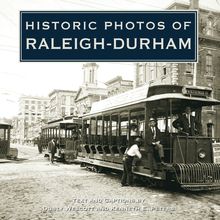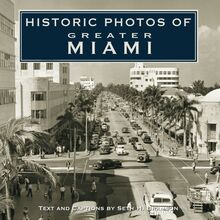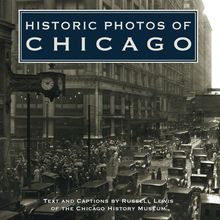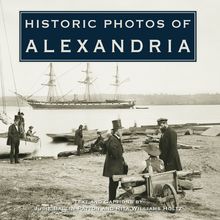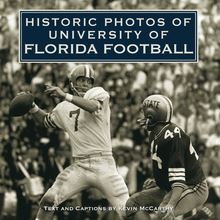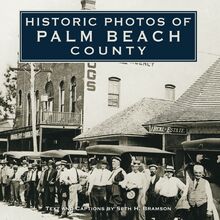Historic Photos of the Brooklyn Bridge , livre ebook
189
pages
English
Ebooks
2009
Vous pourrez modifier la taille du texte de cet ouvrage
Obtenez un accès à la bibliothèque pour le consulter en ligne En savoir plus
Découvre YouScribe et accède à tout notre catalogue !
Découvre YouScribe et accède à tout notre catalogue !
189
pages
English
Ebooks
2009
Vous pourrez modifier la taille du texte de cet ouvrage
Obtenez un accès à la bibliothèque pour le consulter en ligne En savoir plus
Publié par
Date de parution
01 septembre 2009
Nombre de lectures
4
EAN13
9781618584328
Langue
English
Poids de l'ouvrage
11 Mo
The Brooklyn Bridge resounds throughout popular culture as an iconic image. Yet its creation was fraught with turmoil. Working with the relatively untested theory of suspension, John Roebling designed a suspension bridge modeled after his Cincinnati-Covington Bridge, but he died before construction even began. His son Washington then accepted the challenge—only to end up paralyzed while working on the bridge. However, with his strong-willed perseverance and help from his wife, he drove the project through to completion.
As the only bridge connecting Brooklyn and Manhattan at the time, the Brooklyn Bridge carried half a million people daily. The photographs in Historic Photos of the Brooklyn Bridge illustrate not only those traveling the bridge but also the hurdles that over 1,000 American and immigrant workers endured to build this magnificent symbol. Today, admirers from around the world gather on its historical walkway to gaze, admire, and pay homage to the majesty of the Brooklyn Bridge, "the Eighth Wonder of the Modern World.”
Publié par
Date de parution
01 septembre 2009
EAN13
9781618584328
Langue
English
Poids de l'ouvrage
11 Mo
HISTORIC PHOTOS OF
THE BROOKLYN BRIDGE
T EXT AND C APTIONS BY J OHN B. M ANBECK
Revised traffic patterns: Engineers build new traffic patterns as shown in this cross-section drawing of the bridge.
HISTORIC PHOTOS OF
THE BROOKLYN BRIDGE
Turner Publishing Company
200 4th Avenue North Suite 950
Nashville, Tennessee 37219
(615) 255-2665
www.turnerpublishing.com
Historic Photos of the Brooklyn Bridge
Copyright 2009 Turner Publishing Company
All rights reserved.
This book or any part thereof may not be reproduced or transmitted in any form or by any means, electronic or mechanical, including photocopying, recording, or by any information storage and retrieval system, without permission in writing from the publisher.
Library of Congress Control Number: 2008910983
ISBN-13: 978-1-59652-525-2
Printed in China
09 10 11 12 13 14 15 16-0 9 8 7 6 5 4 3 2 1
C ONTENTS
A CKNOWLEDGMENTS
P REFACE
I NSPIRATION : S USPENSION (1860 S )
T HE C REATIVE Y EARS : C ROSSING THE D IVIDE (1869-1883)
T RIUMPH : T HE E IGHTH W ONDER OF THE M ODERN W ORLD (1883)
V IEW FROM THE B RIDGE : S KY , L AND, AND S EA (1884-1920)
F ROM S HORE TO S HORE : A G REAT C ITY (1921-1982)
A B RIDGE FOR A LL T IME : M AGNIFICENCE (1983-2001)
T HE B ROOKLYN B RIDGE : A T IMELINE
N OTES ON THE I MAGES
Suspension Bridge song sheet: This popular song appeared as a tribute to the Cincinnati-Covington Bridge, the closest model to Roebling s next assignment, the Brooklyn Bridge.
A CKNOWLEDGMENTS
This volume, Historic Photos of the Brooklyn Bridge , is the result of the cooperation and efforts of many individuals, organizations, and corporations. It is with great thanks that we acknowledge the valuable contribution of the Brooklyn College Library Archives; the Brooklyn Historical Society; the Brooklyn Public Library, Brooklyn Collection; the Library of Congress; the New York State Archives; and the Queens Borough Public Library, Long Island Collection for their generous support.
We would also like to thank the following individuals for valuable contributions and assistance in making this work possible:
Joy Holland, Brooklyn Public Library
Marianne LaBatto and Michael Armstrong
Julie May, Brooklyn Historical Society, Brooklyn College Archives Library
My wife, Virginia, who helped shape my choice of words
I m greatly indebted to David McCullough for the inspiration he provided in The Great Bridge: The Epic Story of the Building of the Brooklyn Bridge (New York: Simon Schuster, 1972). Other useful references have been A E s Modern Marvels series production about the Brooklyn Bridge; Brooklyn Bridge: Fact and Symbol by Alan Trachtenberg; and Ken Burns first documentary, The Brooklyn Bridge .
Now that this book has re-created the pains and effort of building the daring enterprise called the Brooklyn Bridge, may it be a tribute to the many forces involved with its original creation.
-------
With the exception of touching up imperfections that have accrued with the passage of time and cropping where necessary, no changes have been made to the images. The focus and clarity of many images are limited to the technology and the ability of the photographer at the time they were taken.
P REFACE
Within this city of towering steel skyscrapers, the most impressive structure was created from stone and steel over 100 years ago, stands only 274 feet tall and emerged from Brooklyn. In the city of New York with its constantly altering skyline, only the Brooklyn Bridge has remained constant for over a century.
The towers Gothic arches evoke the majesty of another time, their peaks reminiscent of the crenellated turrets of a castle. Yet there the bridge stands, connecting the shores of Brooklyn and Manhattan, the first permanent link between two key segments of New York City. It started when Brooklyn and New York existed as individual cities. It commands attention still.
The bodies of water that swept around the islands of New York posed an obstacle to the mobility of the population, but the people resigned themselves to watercraft, from rowboats to steamers. As early as 1788, dreamers fantasized about bridges across the East River-a pontoon bridge by John Stevens in 1807, a wooden Rainbow Bridge by Thomas Pope in 1811, and a chain suspension bridge in 1829. But it took industrialization and Roebling engineering to succeed in suspending a steel bridge across the waters.
After experimenting with aqueducts in Pennsylvania and bridges at Niagara Falls and in Ohio, John Roebling, a manufacturer of steel wire and cable, drew up blueprints for the first realistically conceived East River bridge. With his son Washington, also an engineer, John studied construction possibilities and considered contingencies and alternatives. When John died in 1869, Washington took over; when he was injured, his wife Emily assisted. The bridge was a family affair.
After 14 years, multiple deaths, charges of corruption, and politically inspired delays, the bridge opened for traffic on May 24, 1883. That Brooklyn world appeared vastly different from the scene today. Life was simpler then. Consider that in 1869-the year that John Roebling started surveying for the Great East River Bridge-the steam engine was only 55 years old, suspension bridges were relatively unknown, and the tallest structures in urban communities were church steeples and masts of sailing ships.
In the city of Brooklyn, as elsewhere, the primary transportation was by horse, although the new bicycle had caught the public s fancy. Houses and streets relied on candles, gas, and kerosene for illumination. While suburban communities in Brooklyn expanded into independent villages, large chunks of agrarian property prevailed in southern Kings County.
By 1869, when Roebling started drawing up his plans, the Civil War had ended only four years earlier and Coney Island possessed one small hotel, several bathhouses, and much useless sand. But in 1883, when the bridge opened, Brooklyn had blossomed. As a visiting cabinet member observed, I thought Brooklyn had but one hotel and a shipyard or two, but I see it s quite a town. The city had at least five major steam railroads running Brooklyn s length: at the railroads terminals in Coney Island, about 25 hotels had been erected, and elevated trains crisscrossed northern Brooklyn. Brooklyn mayor Seth Low accepted national praise for the city s progress.
Today, with its image imbedded in our psyche, the Eighth Wonder of the Modern World has become as important to our American identity as Mickey Mouse. The Gothic arches, classic lines, and majestic design of the bridge have inspired artists, authors, photographers, playwrights and moviemakers, poets, songwriters, and commercial copywriters. In more than 22 films, the bridge has played a major role; over 15 popular songs have featured it. In 1964, the government declared it a National Historic Landmark. And the borough of Brooklyn esteems it as the symbol of its success. Outstanding among tributes to the span are The Great Bridge by David McCullough, Brooklyn Bridge: Fact and Symbol by Alan Trachtenberg, and the documentary film Brooklyn Bridge by Ken Burns.
During the fragile beginnings of the Brooklyn Bridge, the doubts of naysayers surrounded every step of its creation-yet the Roeblings never hesitated. The imagery and mystery surrounding this timeless creation remains a story of the ages. This book is a pictorial record of a struggle to build the great bridge-and of its success.
Rainbow Bridge: Among the earliest proposals for a bridge across the East River was this one by Thomas Pope. In 1811 he conceived of the Flying Pendant Lever Bridge made from wood: a 1,800-foot-long, 200-foot-high arch with no suspension and no supports. It looked like a rainbow. Pope created a model that was destroyed in a storm, just as the real bridge would have been.
I NSPIRATION : S USPENSION
(1860 S )
Four years before the 1806 birth of John Roebling in M hlhausen, Thuringia, a section of Prussia destined to become the heart of Germany, the New York State legislature received a petition to construct a bridge across the East River. Without the know-how, though, the task was impossible.
Roebling, an architectural student who studied philosophy under Hegel, received a degree in civil engineering in 1826 from the Royal Polytechnic Institute of Berlin. While traveling through Bavaria, he brightened at the sight of his first suspension bridge, intrigued with the concept of suspension and what would make it foolproof. Fleeing Germany s turmoil, he immigrated to America in 1831 at the age of 25 and settled in Pennsylvania near Pittsburgh.
In 1837, while surveying railroad and canal routes, he designed steel wires to replace rope hawsers on canals. Out of these projects, Roebling received his first commission in 1844 to build a suspension aqueduct to carry the Pennsylvania Canal over the Allegheny River. By 1848, he had completed four more aqueducts and opened a profitable wire factory. He then moved to Trenton, New Jersey, and created Trenton Wire Rope plant, which manufactured bridge cables. Using his engineering knowledge, he designed suspension bridges in Cincinnati, St. Louis, Pittsburgh, and at Niagara Falls.
In 1865, John s son Washington, a Union colonel in the Civil War, was released from duty and joined his father in completing John s most ambitious project yet: the Covington-Cincinnati Suspension Bridge between Kentucky and Ohio. Opening in 1867, it was the longest suspended span in the world and most closely resembled the Brooklyn Bridge design.
Encouraged by a severe freeze-over of the East River during the winters of 1866 and 1867, William Kingsley, editor of the Brooklyn Eagle , persuaded state senator Henry Cruse Murphy to issue a charter authorizing a toll bridge between Brooklyn and New York City. Then the New York legislature passed a bridge bill. In April 1867, John Roebling-whose designs included three



